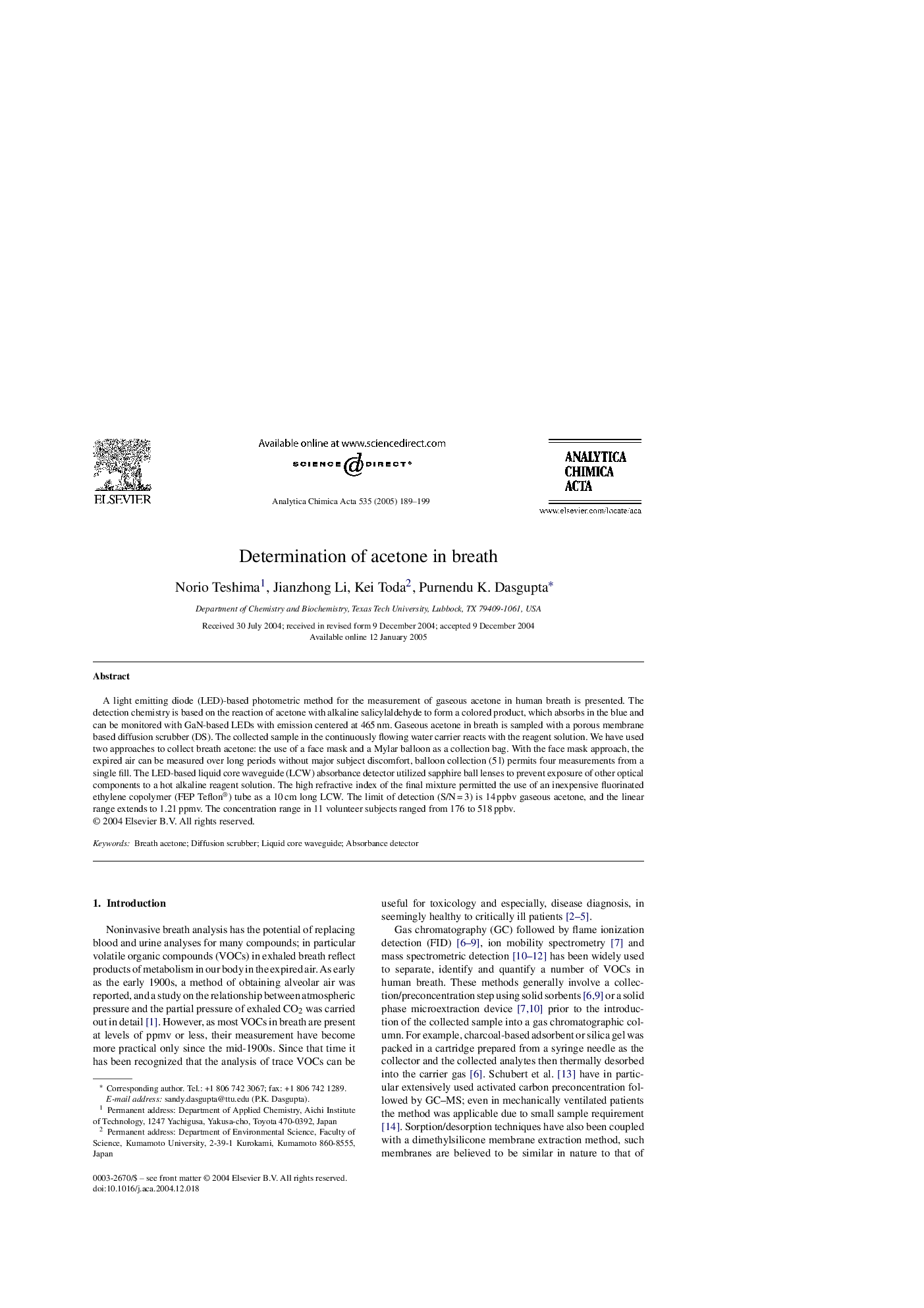| Article ID | Journal | Published Year | Pages | File Type |
|---|---|---|---|---|
| 9743881 | Analytica Chimica Acta | 2005 | 11 Pages |
Abstract
A light emitting diode (LED)-based photometric method for the measurement of gaseous acetone in human breath is presented. The detection chemistry is based on the reaction of acetone with alkaline salicylaldehyde to form a colored product, which absorbs in the blue and can be monitored with GaN-based LEDs with emission centered at 465Â nm. Gaseous acetone in breath is sampled with a porous membrane based diffusion scrubber (DS). The collected sample in the continuously flowing water carrier reacts with the reagent solution. We have used two approaches to collect breath acetone: the use of a face mask and a Mylar balloon as a collection bag. With the face mask approach, the expired air can be measured over long periods without major subject discomfort, balloon collection (5Â l) permits four measurements from a single fill. The LED-based liquid core waveguide (LCW) absorbance detector utilized sapphire ball lenses to prevent exposure of other optical components to a hot alkaline reagent solution. The high refractive index of the final mixture permitted the use of an inexpensive fluorinated ethylene copolymer (FEP Teflon®) tube as a 10Â cm long LCW. The limit of detection (S/NÂ =Â 3) is 14Â ppbv gaseous acetone, and the linear range extends to 1.21Â ppmv. The concentration range in 11 volunteer subjects ranged from 176 to 518Â ppbv.
Related Topics
Physical Sciences and Engineering
Chemistry
Analytical Chemistry
Authors
Norio Teshima, Jianzhong Li, Kei Toda, Purnendu K. Dasgupta,
